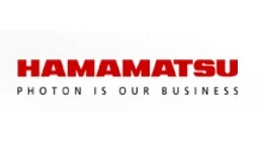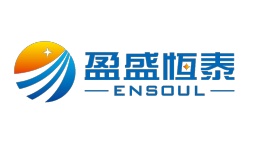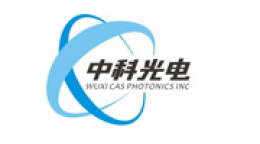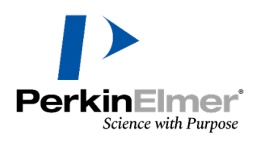方案详情文
智能文字提取功能测试中
Mar. 2017 Gas measurement devices Gas measurement devices Wide lineup of light sources and detectors mainly in the infrared region suitable for gas measurementsA light source and a detector can be provided as a product set. Gas detection methods and principles. 2 Light sources and detectors and gas absorption wavelengths ….... 3 Applications ·mM 4 Infrared light sources and detectors ·.... 5 Selection of light sources and detectors . 5 Light source….. ..7 -Mid Infrared LED (MWIR-LED)…. 17 - Quantum Cascade Laser (QCL) 8 .- 20 W Xenon Flash Lamp ... 9 Detector ... ..10 -InAsSb Photovoltaic Detector .... 10 - Thermopile.. .. 12 Ultraviolet and visible light sources and detectors …13Light source.... 13 -Lamps for Gas Measurement ...... 13 -Fiber Output Laser Diode (760 nm DFB pigtail)..... .113 Detector 1113 -Si Photodiode .. ..13 - Photomultiplier Tube... 13 Related products.... mmMI MM14 -Pulsed QCL Module ..... .14 -Trigger Socket and Power Supply for 20 W Xenon Flash Lamp… 14 -Photodiode Module .. 1.115 - Infrared Detection Modules with Preamp (TE-cooled type, metal dewar type)mmm.mmmm .15 ●Gas detection methods and principles There are two main methods of gas measurement using light. One method uses ultraviolet light, and the other uses infrared light. Gasmolecules have unique absorption wavelengths. Gas density is measured by measuring their absorbances. Particularly in the infrared re-gion, there are many absorption wavelengths specific to gas attributable to the vibration of gas molecules. As such, the method is usedin various gas measurements, like other detection methods. Features Solid sensor catalyticcombustion type Solid sensor semiconductortype Electrochemical sensortype Infrared optical sensortype Principle Temperature rise detectionduring flammable gas combustion Detection of absorption O2ion change on metal oxidesemiconductor surfaces Detection of currentchanges due to gas electrolysis Detection of the gas's infrared absorption Accuracy Good Fair Good Good Service life Fair Good Good Excellent Response Fair Good Fair Good Price Fair Good Fair Fair Unlike other detection methods, infrared optical sensor types allow measurement without the sensor itself making direct contact with thegas. This makes them suitable for inline and high-purity gas measurements. They can even detect gas in remote locations. There are two types of infrared optical sensors: dispersive and non-dispersive (NDIR). The dispersive type measures by separating theirradiated infrared into wavelength components using a diffraction grating or the like. It can measure various types of gases, but becauseit requires diffraction grating and the like, the equipment is relatively large. In contrast, the non-dispersive type does not separate infra-red into wavelength components. A light source or filter that corresponds to the absorption wavelengths of the relevant gas is required,but it excels in gas selectivity. The infrared optical sensor type (especially the non-dispersive type) allows gas detection with high perfor-mance, high sensitivity, high reliability, and long lifetime due to the characteristics of the device that is used. >Images of light source and detector combinations Further minute level of gas can be detected by making the reflec-tion path longer. Used to measure relatively high-density gases. As the sensor doesnot make direct contact with the gas, it is suitable for inline gasmeasurement. ●) Light sources and detectors and gas absorption wavelengths Hamamatsu Photonics provides various light sources and detectors for optical gas measurement from the ultraviolet to the infrared re-gion. We offer optimal combinations according to your application. Lineup of light sources and detectors Wavelength (pm) ●Applications Detects methane gas leakage in factories Used in the analysis of pollutant gases in the atmosphere mirror Measures CO2 concentration necessary for photosynthesis of plants Used in the analysis of SOx and NOx in gases emitted from facto-ries and the like. Exhaled breath analysis Analysis of gases in exhaled breath is expected to help in the earlydetection of lifestyle-related diseases. Quantum Cascade Laser (QCL) ·Wavelength: 4 pm to 10 pm band ·High resolution, high output, high reli-ability, high-speed response => For minute, high accuracy gasdetection Xenon Flash Lamp (Xe-F) ·Wavelength: 0.2 pm to 5.0 pm (continu-ous spectrum) ·High output pulse emission in the micro-second order ·Long life = For relatively simple sensors =For multiple gas detection Type no. Wavelengthrange Output Time response characteristics Power consumption Lifetime Price MWIR-LED Narrow Fair Good Good Good Good QCL Line spectrum Excellent Good Fair Fair Poor Xe-F Wide Excellent Fair Poor Fair Fair Filament Lamp Wide Good Poor Poor Fair Excellent InAsSb Photovoltaic Detector (quantum type detector) High sensitivity, high-speed response = For relatively simple sensors Used in pairs with an LEDFor applications that require relatively high accuracyUsed in pairs with a QCL Thermopile (thermal type detector) · Covers a wide wavelength range, inexpensive · Can support band-pass filters for CH4, CO2, and reference light= For relatively low-end applications Photosensor Sensitivity Wavelengthdependence Time responsecharacteristics Cooling Price Quantum type Good Yes Good Cooling (partiallynot required) Fair Thermal type Fair None Fair Non-cooled Good ECO2 gas measuring instrument groups and detector examples High A >Gas absorption wavelengths and examples of light source (LED, QCL) and detector (InAsSb photovoltaic detector) combinations LED Wavelength Gas Applicable LED Detector 3.3 um CH4 L13771-0330M P13243 series P11120 series 4.3 um CO2 L13201-0430M ■ QCL Wavelength Gas Applicable QCL Detector DFB-CW drive type DFB-pulse drive type 4.3 um 12CO2/13co2 L12004-2310H-C - P13243 series P11120 series 4.48 um N2O, CO, CO2 - L12014-2231T-C 4.53 um N2O L12004-2209H-C - 4.57 um N2O, CO L12004-2190H-C 5.26 pm NO L12005-1900H-C L12015-1901T-C 6.13 um NO2 L12006-1631H-C L12016-1630T-C P12691-201 7.18 um SO3 L12007-1392H-C - 7.39 um SO2 L12007-1354H-C - 7.73 um 12CH4/13CH4 L12007-1294H-C - 7.82 pm CH4, N2O - L12017-1278T-C 9.0 um NH3 - - P13894 series 9.6 um O3 - - 10.07 um NH3 - L12020-0993T-C Note: It does not guarantee that detection is possible. Mid Infrared LED(MWIR-LED) NEW The MWIR-LED is a high output LED with a peak emission wavelength in the middle infraredregion. We offer metal packages, and compact ceramic packages for peak emission wave-lengths 3.3, 3.9, and 4.3 pm. For detectors, use InAsSb photovoltaic detectors or otherquantum type detectors. >Emission spectrum >Radiant flux vs. pulse forward current (Typ.Ta=25°C) Wavelength (um) KLEDB0437EB Pulse forward current (mA) KLEDB0438EB L13771-0330C, L13771-0330M (3.3 pm peak emission wavelength) Parameter Symbol Condition Min. Typ. Max. Unit Peak emission wavelength Xp IF=50 mA, QCW mode* 3.1 3.3 3.4 um Spectral half width AX IF=50 mA, QCW mode* 300 500 nm Radiant flux 中e IF=50 mA, QCW mode* 0.15 0.25 mW Forward voltage VF IF=50 mA, QCW mode* 2.1 2.5 V Reverse current IR VR=0.1V - 500 pA Rise time tr 10 to 90% - 1 ps L13454-0390C, L13454-0390M (3.9 um peak emission wavelength) Parameter Symbol Condition Min. Typ. Max. Unit Peak emission wavelength 入p IF=80 mA, QCW mode* 3.8 3.9 4.1 um Spectral half width AX IF=80 mA, QCW mode* - 500 800 nm Radiant flux 中e IF=80 mA, QCW mode* 0.1 0.2 - mW Forward voltage VF IF=80 mA, QCW mode* - 1.7 2.1 Reverse current IR VR=0.1V - - 1000 uA Rise time tr 10 to 90% - - 1 us L13201-0430C, L13201-0430M (4.3 um peak emission wavelength) Parameter Symbol Condition Min. Typ. Max. Unit Peak emission wavelength 入p IF=80 mA, QCW mode* 4.1 4.3 4.4 um Spectral half width AX IF=80 mA, QCW mode* - 700 1000 nm Radiant flux 中e IF=80 mA, QCW mode* 0.15 0.3 - mW Forward voltage VF IF=80 mA, QCW mode* - 1.6 2.0 Reverse current IR VR=0.1V - 1000 uA Rise time tr 10 to 90% - - 1 us * QCW: Quasi Continuous Wave CW Quantum Cascade Lasers Quantum Cascade Lasers use Single Photon Continuum depopulation and Distributed Feed-back (DFB) structures to emit Continuous Wave (CW) mid-IR laser light under room tem-perature. By controlling the chip's operating temperature through the Peltier element installed in theHHL package, it is possible to tune the emission wavelength without mode hopping whilekeeping longitudinal single mode operation. HHL package Type No. Wavelength* Operating temperature (QCL)*2 Line width*3 Tunable range*+ Output power Thresholdcurrent Side-modesuppression ratio(SMSR) Typ. Min. Max. Max. Min. Min. Max. Min. L12004-2310H-C 4.33 pm +10°C +50°C 0.2 cm-1*5 ±1.0 cm 20 mW 1.0 A 25 dB Condition: K=2310 cm-1*6 Condition: Top(qcl)=20 °C L12004-2209H-C 4.53 pm +10°C +50°C 0.2 cm-1*5 ±1.0 cm 20 mW 1.0 A 25 dB Condition: K=2209 cm-1*6 L12004-2190H-C 4.57 pm +10°C +50 °C 0.2 cm-1*5 ±1.0 cm 20 mW 1.0 A 25 dB Condition: K=2109 cm-1*6 Condition: Top(qcl)=20 °C L12005-1900H-C 5.26 pm +10°C +50 °℃ 0.2 cm--1*5 ±1.0 cm 20 mW 1.0 A 25 dB Condition: K=1900 cm-1*6 L12006-1631H-C 6.13 pm +10°℃ +50°℃ 0.2 cm-1*5 ±1.0 cm 20 mW 1.0 A 25dB Condition: K=1631 cm-1*6 L12007-1392H-C 7.18 pm +10°C +50°℃ 0.2 cm-1*5 ±1.0 cm 20 mW 1.0 A 25 dB Condition: K=1392 cm-1*6 Condition: Top(qcl)=20°℃ L12007-1354H-C 7.39 pm +10 °C +50 °C 0.2 cm-1*5 ±1.0 cm 20 mW 1.0 A 25dB Condition: K=1354 cm-1*6 L12007-1294H-C 7.73 pm +10°C +50°℃ 0.2 cm-1*5 ±1.0 cm² 20 mW 1.0 A 25 dB Condition: K=1294 cm-1*6 Condition: Top(qcl)=20°℃ Condition: K=1294 cm-1*6 *1: Please contact a Hamamatsu sales office about QCLs with emission wavelengths not listed above. *2: This specifies the temperature range within which the target emission wavenumber (K) can be realized. *3: Full-width half maximum *4: This specifies the continuous tunable range (without mode hopping). The center wavenumber of the tuning range is the emission wavenumber (K). *5: The figures are limited by the resolution and signal/noise ratio of the measuring instruments used. *6:K: Emission wavenumber (cm) CW Quantum Cascade Laser (built-in lens) NEW The lens integrated package for DFB-CW type QCL is sealed and collimated housing. Inter-nal lens provides collimated output beam radiation. TEC (peltier) and thermistor for tem-perature stabilization of QCL-laser chip are inside the housing. The lens integrated package allows to use under good usability without beam alignment ofinvisible mid-infrared laser. HHL package Type No. Wavelength*1 Operating*4temperature(QCL) Line width*3 Tunable*+range Outputpower Thresholdcurrent Side-modesuppressionratioD(SMSR) *5*6Beamspread angle *5*7 Beam waist location *5*8Width ofbeam at waist Typ. Min. Max. Max. Min. Min. Max. Min. Typ. Min. Max. Typ. L12004-2190H-E 4.57 pm +10°C +50°℃ 0.2 cm-1*9 ±1.0 cm 20 mW 1.0 A 25 dB 3 mrad 50 mm 1000 mm 1.5 mm Condition: K=2190 cm-1*10 Condition: Top(qcl)=20C *1: Please contact a Hamamatsu sales office about QCLs with emission wavelengths not listed above. *2: This specifies the temperature range within which the target emission wavenumber (K) can be realized. *3: Full-width half maximum *4: This specifies the continuous tunable range (without mode hopping). The center wavenumber of the tuning range is theemission wavenumber (K). *5: This product has individual difference. Confirm date sheet attached to a product. *6: Half angle beam spread from the perpendicular (Fast) direction (perpendicular to pins) or horizontal (Slow) direction (parallel to pins), whichever is wider. *7: From package top surface *8: 1/e²beam radius sca*9: The figures are limited by the resolution and signal/noise ratio of the measuring instruments used. *10: K: Emission wavenumber (cm1) HAMAMATSU Quantum Cascade Lasers use Single Photon Continuum depopulation and Distributed Feed-back (DFB) structures to emit pulsed mid-IR laser light under room temperature.By controlling the chip's operating temperature through the Peltier element installed in theTO-8 package, it is possible to tune the emission wavelength without mode hopping whilekeeping longitudinal single mode operation. TO-8 package Type No. Wavelength*1 Operating temperature (QCL)*2 Line width*3 Tunable range*+ Pulsed outputpower Threshold current Side-mode suppression ratio(SMSR) Typ. Min. Max. Max. Min. Min. Max. Min. L12014-2231T-C 4.48 pm -10° +50°℃ 0.2 cm-1*5 ±1.0 cm 50 mW 1.5 A 25 dB Condition: K=2231 cm1*6 L12015-1901T-C 5.26 pm -10°C +50°C 0.2 cm1*5 ±1.0 cm 50 mW 1.5A 25 dB Condition: K=1901 cm-1*6 L12016-1630T-C 6.13 pm -10°C +50°C 0.2 cm1*5 ±1.0 cm 50 mW 1.5 A 25 dB Condition: K=1630 cm-1*6 L12017-1278T-C 7.82 pm -10°C +50°C 0.2 cm1*5 ±1.0 cm· 50 mW 1.5 A 25 dB Condition:K=1278 cm-1*6 L12020-0993T-C 10.07 pm -10°C +50°C 0.2 cm1*5 ±1.0 cm 50 mW 1.5 A 25 dB Condition: K=993 cm-1*6 *1: Please contact a Hamamatsu sales office about QCLs with emission wavelengths not listed above. *2: This specifies the temperature range within which the target emission wavenumber (K) can be realized. *3: Full-width half maximum *4: This specifies the continuous tunable range (without mode hopping). The center wavenumber of the tuning range is the emission wavenumber (K). *5: The figures are limited by the resolution and signal/noise ratio of the measuring instruments used. *6:K: Emission wavenumber (cm) 20 W Xenon Flash LampL11938, L11948,L11958, L11968 Xenon Flash Lamp allows to choose the most suitable radiation wavelength from variouswindow material including the sapphire window material type practicable for measure-ment of the mid-infrared area. Use of a new electrode ensures highly stable operation andminimal wear even at high energy input, achieving 1.2 times higher light output intensity,1.5 times light output stability, and 2 times longer lifetime than other manufacturers'lamps.Also, to operate the Xenon Flash Lamp, required dedicated power supply and trigger-socket. (See P.14) Our product lineup includes lamp modules with lamp, trigger socket andpower supply all integrated into one unit. Arc size L11938 1.5 3.0 mm Unit Window material Sapphire glass - Spectral distribution 190 to 5000 nm repetition rate (Max.) 1000 Hz Light output stability*1 1.0 % CV Guaranteed life*2 1.0×10° flashes Cooling method Not required Applicable trigger socket (sold separately) E10977 E10978 - *1: Light output stability is given by: The P13243 series are photovoltaic type infrared detectors that have achieved high sensitivity inthe spectral band up to 5 pm without cooling using Hamamatsu original crystal growth technol-ogy and process technology. Because it is non-cooled, it is compact and easy to handle. Spectral response (D*) >Electrical and optical characteristics (Ta=25°C) Parameter Symbol Condition Min. Typ. Max. Unit Peak sensitivitywavelength 入p - 3.5 - um Cutoff wavelength Xc 5.0 5.3 - um Photosensitivity 入=入p 4.0 4.5 - mA/W Shunt resistance Rsh VR=10 mV 120 300 kQ Detectivity D* (Ap, 600, 1) 8.0×10 1.0× 10 - cm'Hz1/2/w Noise equivalent power NEP 入=入p 7.0×10-11 8.8×10-11 W/Hz1/2 Rise time tr 10 to 90% - 6 12 ns KIRDB0610EB InAsSb Photovoltaic Detector (up to 5 pm) P11120-201 The P11120-201 is a cooled type infrared detector that provides high sensitivity in the 5 umspectral band by employing our unique crystal growth technology. It has a PN junction that en-sures high-speed response and high reliability. D* is improved as a result of cooling, enablinghigher-accuracy gas detection. Handling is easy because it is a TE-cooled type that uses a TO-8package. The P12691-201 is an infrared detector that provides high sensitivity in the 8 pm spectral bandby employing our unique crystal growth technology and back-illuminated structure and by in-tegrating a lens. It has a PN junction that ensures high-speed response and high reliability.Handling is easy because it is a TE-cooled type that uses a TO-8 package. Typical applicationsinclude gas analysis such as NOx, SOx, and H2S. D:Spectral response (D*) >Electrical and optical characteristics (Td=-30°C) Parameter Symbol Condition Min. Typ. Max. Unit Peak sensitivitywavelength 入p 一- 6.7 - um Cutoff wavelength 入c 8.2 8.3 - um Photosensitivity S 入=入p 0.8 1.2 - A/W Shunt resistance Rsh VR=10 mV 13 40 - Detectivity D* (Ap, 600, 1) 4.0×10° 6.0×10 - cm'Hz1/2/w Noise equivalentpower NEP 入=入p - 1.5×10-11 2.3×10-11 W/Hz1/2 Rise time tr VR=0V,RL=50 Q 0 to 63% - 10 ns Wavelength (um) KIRDB0592EC InAsSb Photovoltaic Detector (3 to 11pm)P13894 series |EElectrical and optical characteristics (Ta=25°C) Parameter Symbol Condition P13894-011MA P13894-211MA Unit Min. Typ. Max. Min. Typ. Max. Peak sensitivitywavelength 入p 5.6 - 5.6 - um Cutoff wavelength 入c 9.7 11.0 8.9 10.2 - um Photosensitivity S 入=Xp 1.3 1.9 - 2.8 3.8 - mA/W Shunt resistance Rsh VR=10 mV 1.5 2.0 - 7.5 10.0 - k Detectivity D* (Ap, 1200,1) 3.8×10' 6.5×10 - 1.8×10° 3.2×10° - cm'Hz/2/w Noise equivalentpower NEP X=入p 1.5x10 2.6×10° - 3.1×1010 5.6×10 W/H1/2 Rise time tr 10 to 90%,入=1.55 um* - 3 10 3 10 ns sSpectral response (D*) Thermopile Hamamatsu Photonics applies the MEMS technology that it has accumulated over the years to thermopiles. We offer a lineup of single ele-ment to quad element types. This enables the customers to select the appropriate type for their needs. Parameter Single element type Dual element type Quad element type Type no. T11262 seriesT11361 series T11722 series T13565 series Number of elements 1 2 4 Package type TO-18 TO-5 TO-8 Window material Si with AR coating Band-pass filter Si with AR coating Spectral responserange 3 to 5 pm 3.9 pm/4.3 pm (reference light) 3 to 5 pm Main applications Gas analysis Photosensitivity 50 V/W Detectivity 1.3 × 10° Appearance ●Ultraviolet and visible light sources and detectors Light source Lamps for Gas Measurement LAMP Features of lamp Features Madein Hamamatsu SpectralDistribution(nm) Wattage(W) Outputstabilityfluctuation(P-p) Life(hour) Xenon Flash Lamp · Pulse light · Broad spectrum fromUV to IR · Long life · High stability 160 to 5000 2 to 60 Less than3% 20000* Xenon Lamp · Broad spectrum fromUV to IR · Long life ·High stability · No arc point shift 185 to 2000 35 to 300 Less than1% 1000 to 4000 Deuterium Lamp · Broad spectrum in UVrange · High stability · Long life · High stability ' Stationary emission pointensures high accuracy 115 to 400 5 to 150 0.005%Typ. 1000 to 4000 * This value is when repetition rate is set to 10 Hz of operation. Life time is depends on the repetition rate. Fiber Output Laser Diode (760 nm DFB pigtail)L13421-01 Distributed feedback laser diode contains an integrated grating structure to stabilize the wave-length. This product has narrow linewidth for oxygen sensing in comparison with Fabry-Perotlaser diodes. Detector Si Photodiode S12698 series The S12698 series are Si photodiodes that have achieved high reliability for detecting ultravioletlight by employing a structure that does not use resin. They exhibit low sensitivity deteriorationunder UV light irradiation and are suitable for applications such as monitoring intense UV lightSOurces. Photomultiplier Tube R955 R955 is 中28 mm side-on type photomultiplier tube.(multialkali photocathode) effective area is8×24 mm, spectral response is 160 nm to 900 nm. ●Related products Pulsed QCL Module NEW The Pulsed QCL Module is a compact module containing a TO-8 can packaged pulsed DFB quan-tum cascade laser, pulse driver and TEC controller. The module can be easily and remotely controlled via Ethernet connection. Standard driving conditions: tw=500 ns, fr=100 kHz, Top(qcl)=20C Type No. Wavelength*1 Operating*-temperature(QCL) Line width*3 Tunable*range Outputpower Side-mode suppression ratio(SMSR) Colimationlenses Beam spreadangle Width of*5beam at waist Typ. Min. Max. Min. Min. Typ. Min. Typ. Typ. L14147-1278-01 7.82 pm +10°C +60 °C 1.0 cm 1.0 cm 100 mW 25dB Not included Condition: K=1278 cm-1*6 L14147-1278-02 7.82 pm +10°C +60°C 1.0 cm 1.0 cm 100 mW 25dB Included 3 mrad 5mm Condition: K=1278 cm-1*6 *1: Please contact a Hamamatsu sales office about QCLs with emission wavelengths not listed above. *2: This specifies the temperature range within which the target emission wavenumber (K) can be realized. *3: Full-width half maximum *4: This specifies the continuous tunable range (without mode hopping). The center wavenumber of the tuning range is the emission wavenumber (K). *5: 1/e²beam radius *6: K: Emission wavenumber (cm) Trigger Socket and Power Supply for 20 W Xenon Flash Lamp These dedicated peripherals to extract the maximize performance of Xenon Flash Lamp.dedicated power supply which enables stable lighting of Xenon Flash Lamp and this power supplyhas large output capacitance while keeping compactness. Also, trigger sockets are integrated witha high voltage transformer, voltage dividing resistors and capacitors in the same compact case.This frees the user from the troublesome task of designing and assembling the external circuit. Measurement setup example Lamp+power supply+trigger socket DSspecifications (Power supply) * The setup shows flash pulse waveform measurement. (See page 9) Parameter C13315 C13316 series Unit Main power supply Output voltage (DC) 300 to 1000 Output capacity (Max.) 20 Stability (Max.) ±0.2 Main discharge capacitance 0.1 0.2 to 1.0*1 uF Maximum repetition rate* 1000*2 Hz Input voltage (DC) 24±2.4 Power consumption 26 Cooling method Not required - Dimensions (W×H×D) 90×43×146 102×51×170 mm Weight 530 694 to 807*3 Applicable trigger socket E10977/E10978 - *1: The main discharge capacitance can be selected from 0.2 pF to 1.0 pF in 0.1 pF steps. *2: Please adjust maximum average lamp input (continuous) to the specification of lower than 20 W. *3: Depend on the main discharge capacitance. Photodiode Module Photodiode Modules are high-precision photodetectors with a built-in Si photodiode and an inte-grated current-to-voltage converter. The output is an analog voltage and can be easily measuredwith a voltmeter and the like. Type no. DimensionsW×D× H(mm) Characteristics Photodiodetype Photosensitivearea(mm) Photosensitivity(mV/nW) Conversionimpedance(V/A) Frequencybandwidth-3dB(Hz) Maximumoutputvoltage(V) Outputnoise(mVp-p) Output Power supply C10439-01 19×46×52 ·Built-in photodiodeSuitable for lightlevel monitoring,color difference meters,flowmeters, etc. Si 2.4×2.4 H: 500L: 5 H: 109L: 10' H: 10L: 1 k Vcc-0.2 2 Analog External power supply(±5 to ±12 V) C10439-02 5.8×5.8 C10439-03 10×10 C10439-07 2.4×2.4 H:0.5 L:0.005 H: 10°L: 104 H: 1kL: 100 k C10439-08 5.8×5.8 C10439-09 10×10 C10439-10 19×50×52 InGaAs 中1 H: 1L:0.01 C10439-11 中3 C10439-14 InAsSb 0.7×0.7 H: 0.045L: 0.0045 H: 10'L: 106 H: 100L:1k Infrared Detection Modules with Preamp (TE-cooled type, metal dewar type) These modules integrate a preamp and various infrared detectors. A variety of products is available for different wavelength regions. Infra-red light can be detected simply by connecting a DC power supply. (Typ.) Type Type no. Photo Detector (built-in) Photosensitivearea(mm) Cooling Measurementconditions Cutoff wavelength(um) Peaksensitivitywavelength(um) Elementtemperature(C) TE-cooled type C12483-250 InGaAs (G12180-250A) 中5 TE-cooled -15 1.66 1.55 C12485-210 InGaAs (G12182-210K) 中1 2.05 1.95 C12486-210 InGaAs (G12183-210K) 2.56 2.3 C12492-210 InAs (P10090-21) 中1 -28 3.45 3.25 P4631-03 InSb (P6606-310) 1×1 -58 6.1 5.5 C12494-210S InAsSb (P11120-201) 中1 -28 5.9 4.9 C12494-210M InAsSb (P12691-201) 8.3 6.7 Metal dewar type G7754-01 InGaAs (G12183-010)*1 中1 Liquidnitrogen -196 2.4 2.0 G7754-03 InGaAs (G12183-030)*1 中3 5.5 5.3 P7751-01*2 InSb (P5968-060) 中0.6 P7751-02*2 InSb (P5968-200) 中2 *1: chip *2: FOV=60° The content of this document is current as of March 2017. HAMAMATSU www.hamamatsu.com HAMAMATSU PHOTONICS K.K., Solid State Division ( 1 126-1 Ichino-cho, Higashi-ku, H amamatsu City, 435-8558 Japan, Telephone: (81) 53- 4 34-3311, Fax: (81) 53-4 3 4-5184 ) U.S.A.: Hamamatsu Corporation: 360 Foothill Road, Bridgewater, N.J. 08807, U.S.A., Telephone: (1) 908-231-0960, Fax: (1)908-231-1218 Germany: Hamamatsu Photonics Deutschland GmbH: Arzbergerstr. 10, D-82211 Herrsching am Ammersee, Germany, Telephone: (49) 8152-375-0, Fax: (49) 8152-265-8 France: Hamamatsu Photonics France S.A.R.L.: 19, Rue du Saule Trapu, Parc du Moulin de Massy, 91882 Massy Cedex, France, Telephone: 33-(1) 69 53 71 00, Fax: 33-(1) 69 53 71 10 United Kingdom: Hamamatsu Photonics UK Limited: 2 Howard Court, 10 Tewin Road, Welwyn Garden City, Hertfordshire AL7 1BW, United Kingdom, Telephone: (44) 1707-294888, Fax: (44) 1707-325777 North Europe: Hamamatsu Photonics Norden AB: Torshamnsgatan 35 16440 Kista, Sweden, Telephone: (46)8-509-031-00, Fax: (46) 8-509-031-01Italy: Hamamatsu Photonics Italia S.r.l.: Strada della Moia, 1 int. 6, 20020 Arese (Milano), Italy, Telephone: (39) 02-93581733, Fax: (39) 02-93581741 HAMAMATSUPHOTO N IS OUR BUSINE S S HAMAMATSUPHOT O N IS O U R BUSINE S S 气体分析包括气体色谱分析、质量分析,而这些都需要采集样本后带到实验室进行分析。如果通过使用激光的中红外光学法,则实现在线监测。更加实时和便捷,应用范围也更广泛。不同分子的气体都有其固定的、独有的特征吸收峰,我们根据这些吸收峰的位置进行识别,从而分辨出是哪种气体以及浓度大小,这些吸收峰我们也称之为“分子的指纹峰”,利用中红外光指纹峰来判断气体的种类和浓度,已经广泛地应用于气体中氮氧化物和硫氧化物的测定。滨松致力于中红外波段气体的分析,在波段3μm~10μm间,包括甲烷、二氧化碳、一氧化碳、硫氧化物、氮氧化物等许多有害气体都能够通过这种方法被测得。针对有害气体的监测,滨松可提供一套完整的红外气体分析系统。
关闭-
1/16

-
2/16
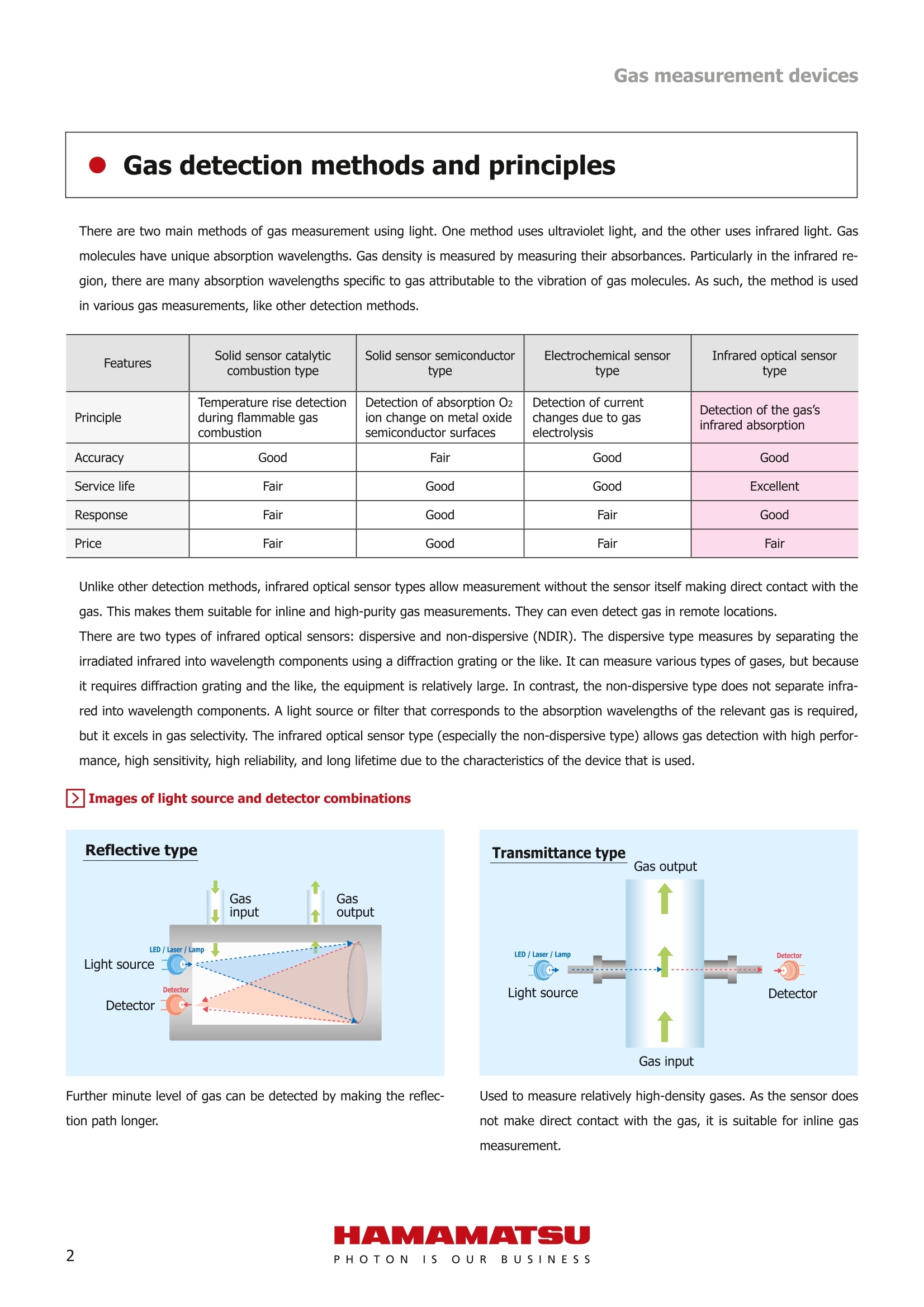
还剩14页未读,是否继续阅读?
继续免费阅读全文产品配置单
滨松光子学商贸(中国)有限公司为您提供《气体中多类有害物质检测方案(激光产品)》,该方案主要用于空气中分子态无机污染物检测,参考标准《暂无》,《气体中多类有害物质检测方案(激光产品)》用到的仪器有L12017-1278T-C 量子级联激光器、滨松P12691-201铟砷锑光伏探测器、滨松氘灯。
我要纠错
相关方案



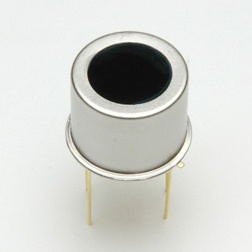
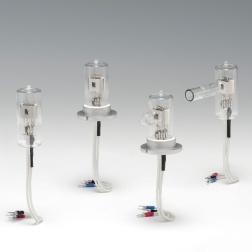



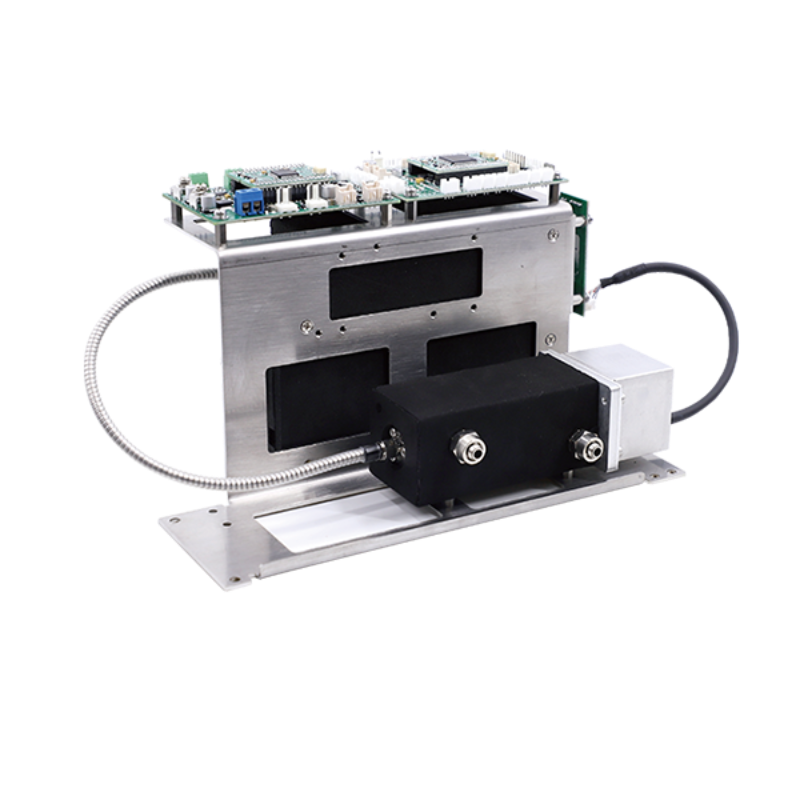

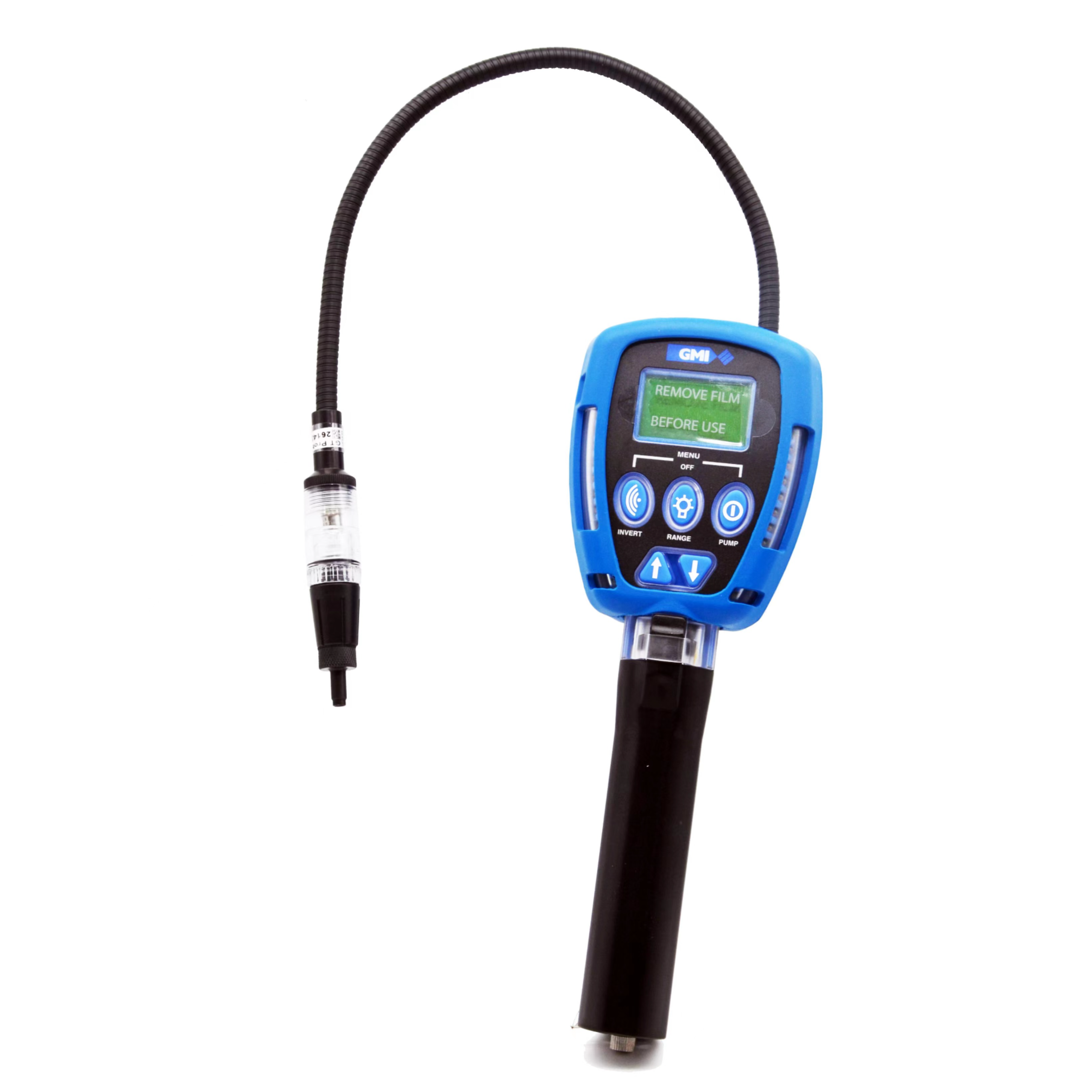

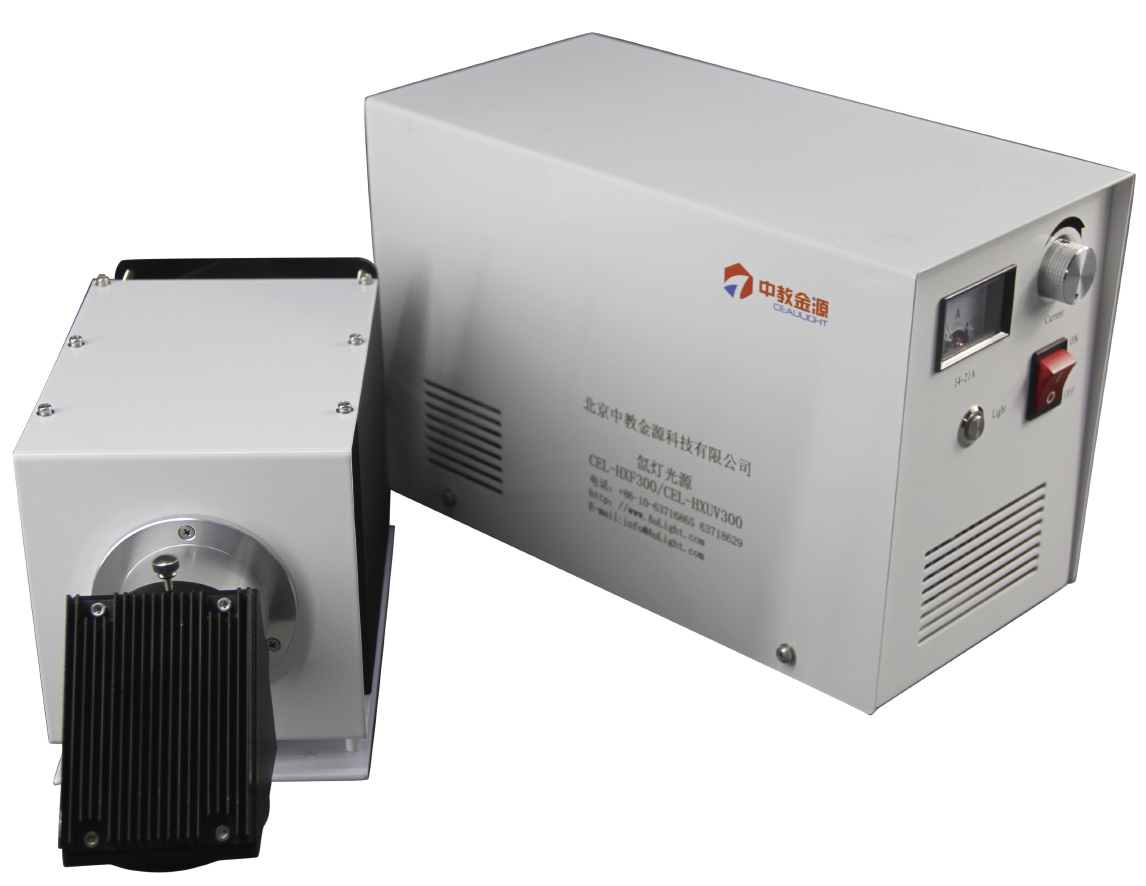
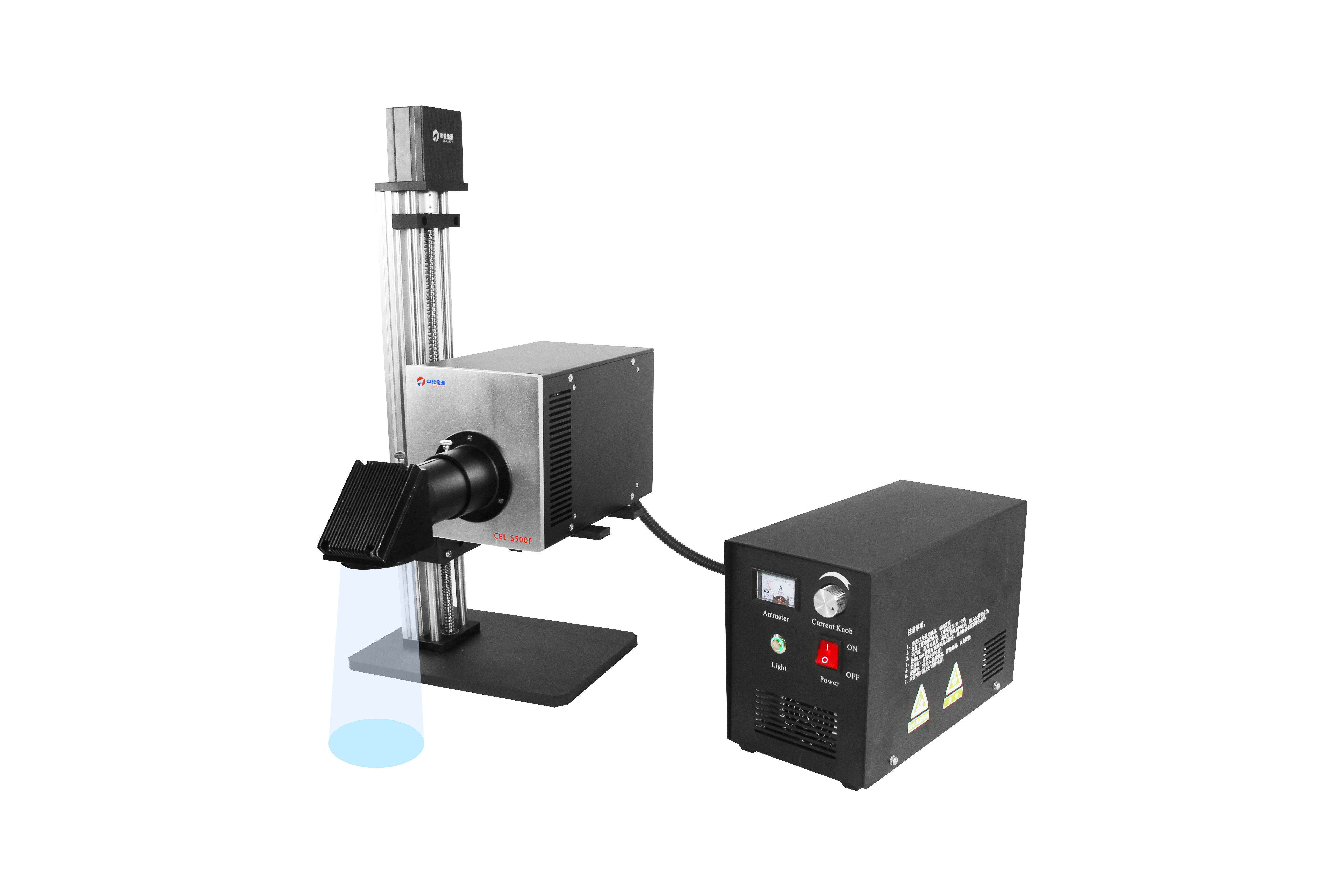
 咨询
咨询